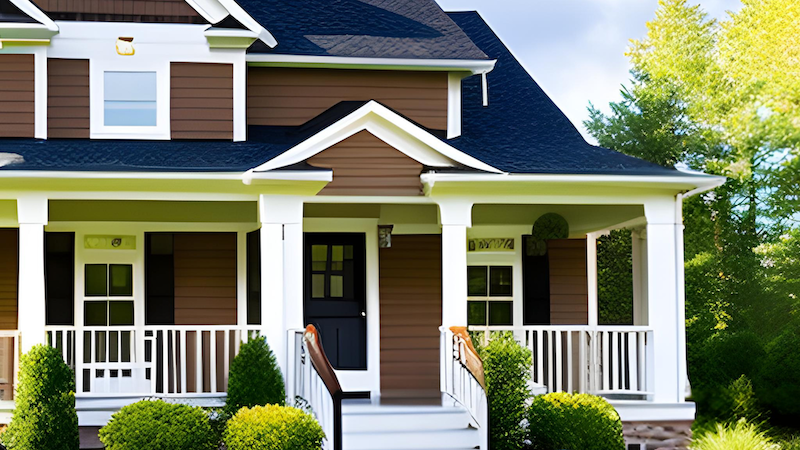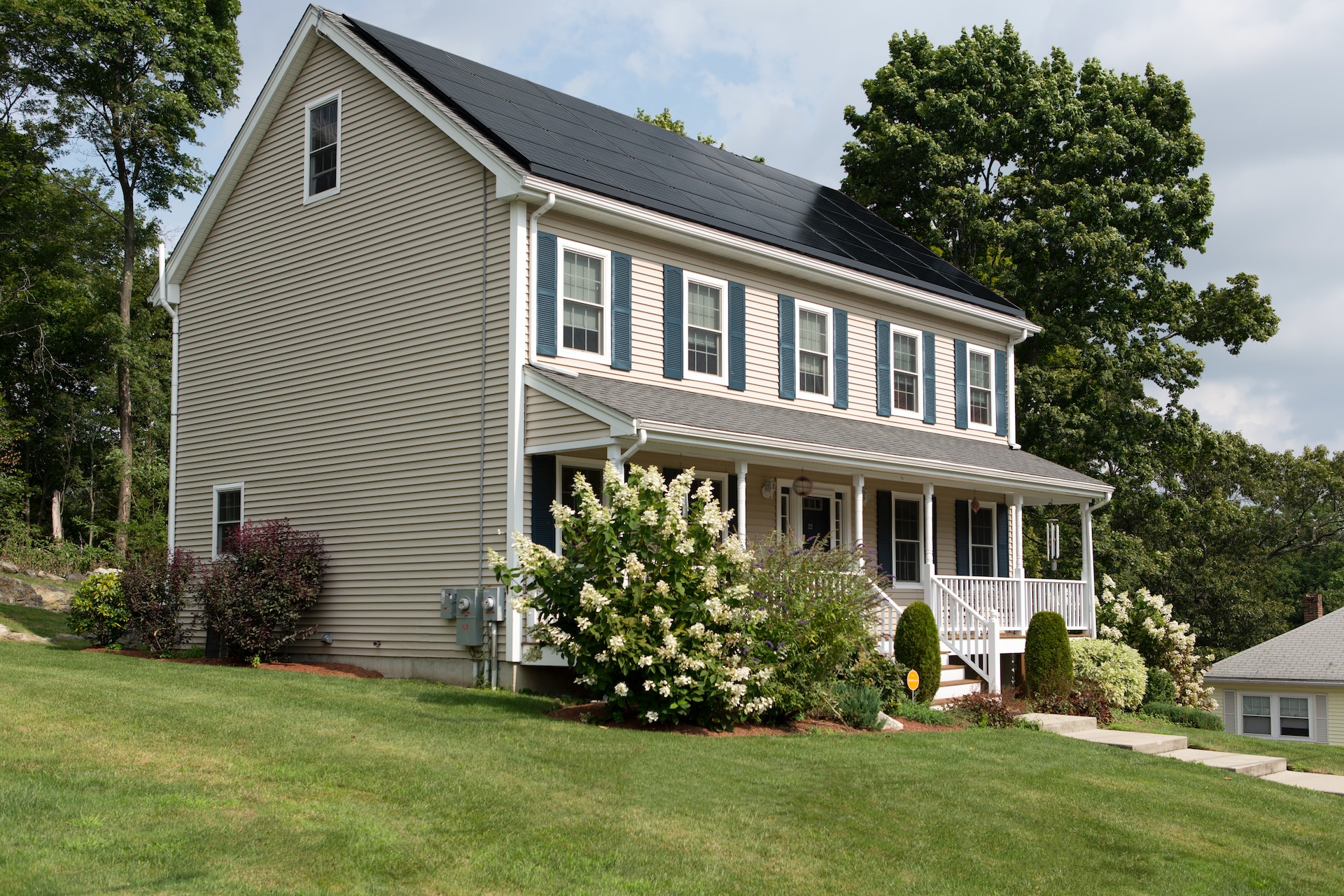Age is more than just a number, and this becomes especially relevant when it comes to home insurance. As a house ages, it may encounter various issues, from structural concerns to outdated systems. Unlike fine wine, homes generally don’t get better with age, at least from an insurance perspective. Your home’s age plays a role in determining your home insurance rates, helping you make informed decisions that could save you a bundle on your insurance costs.
Why Home Age Matters for Home Insurance Rates
Home insurance providers take a holistic approach when determining rates, and the age of your house is a huge piece of this complex puzzle. It’s a factor that carries significant weight in calculating your premiums. But why does the age of your home matter so much to insurers?
The answer lies in risk assessment. Insurance is all about evaluating risk, and older homes, due to various factors, often present more risks. The age of a house can impact the integrity of its structure, the condition of its critical systems, and its overall resistance to damage. While not every older home will necessarily have higher home insurance rates, there’s generally a correlation, and understanding this relationship can help homeowners navigate the insurance landscape more effectively.
Factors Influencing Home Insurance Rates for Older Homes
When assessing the age of your home, insurers don’t just look at the year it was built. They consider several interrelated factors that give them a clear picture of the potential risks of insuring your property.
Outdated Electrical and Plumbing Systems
In many older homes, the electrical and plumbing systems may need to be revised to modern safety standards, posing potential hazards. Outdated electrical systems can increase the risk of electrical fires, while aging plumbing systems can lead to pipe leaks or bursts, causing significant water damage. Consequently, these potential risks can drive up home insurance rates.
Roof Condition
The roof is your home’s first line of defense against Mother Nature. As roofs age, they can become more susceptible to leaks, leading to interior water damage, mold, and other costly issues. If your home’s roof is old and hasn’t been updated, insurers may view it as a higher risk, leading to increased premiums.
Structural Integrity
Over time, the structural integrity of a home can deteriorate. Older homes may also have been constructed using methods or materials considered less safe or durable by today’s standards. Such factors can raise concerns for insurers about potential risks, from collapsing walls to failing foundations, leading to higher premiums.
Maintenance and Upkeep
Regular maintenance can go a long way in preserving the condition of a home and mitigating risks. However, neglected properties, particularly older ones, might suffer from more wear and tear, making them more vulnerable to damage. This increased risk can be reflected in higher insurance rates.
Renovations and Upgrades
On the flip side, investing in renovations and upgrades can breathe new life into your older home. Updating key systems, strengthening the structure, and adding modern safety features can significantly improve your home’s insurability, leading to potentially lower home insurance rates.
Tips for Managing Insurance Costs for Older Homes
Though you can’t turn back time on your home’s age, you’re not powerless when managing your insurance costs. Some strategies can help you mitigate some of the risks associated with older homes and potentially lower your home insurance premiums.
Shop Around and Compare Quotes
Different insurance providers may assess risk differently. Therefore, shopping around, obtaining quotes from multiple insurers, and comparing them is worthwhile. Some insurers may be more favorable towards older homes than others.
Enhance Security Measures
One of the most effective ways to reduce risk is to enhance the safety and security of your home. Installing a home security system, smoke detectors, and other safety measures can help prevent or mitigate damages. Many insurers offer discounts for these proactive measures.
Update Key Systems
If your home has outdated electrical, plumbing, or HVAC systems, consider upgrading them. While there’s an upfront cost, modern systems can significantly reduce the risk of fire or water damage, potentially leading to lower insurance rates in the long run.
Opt for Higher Deductibles
A higher deductible means you’re willing to pay more out of pocket in the event of a claim, reducing the financial risk for your insurer. This can often result in lower insurance premiums. However, it’s crucial to ensure you can cover the higher deductible if you ever need to file a claim.
Seek Professional Guidance
An insurance agent or broker specializing in homeowners insurance can provide invaluable insights and advice tailored to your circumstances. They can guide you through the process, help you understand your coverage options, and assist you in finding ways to lower your insurance rates.
The age of your home plays a significant role in your homeowners insurance rates. This correlation is largely due to outdated systems, structural integrity, and maintenance levels, which can increase the potential risks associated with insuring older homes. However, by understanding these factors and proactively managing risks, you can take control of your insurance costs.
So, don’t let your home’s age be a stumbling block to securing affordable coverage. Instead, use it as a starting point to understand, manage, and potentially even reduce your insurance costs.
Over time, the structural integrity of a home can deteriorate. Older homes may also have been constructed using methods or materials considered less safe or durable by today’s standards. Such factors can raise concerns for insurers about potential risks, from collapsing walls to failing foundations, leading to higher premiums.
Maintenance and Upkeep
Regular maintenance can go a long way in preserving the condition of a home and mitigating risks. However, neglected properties, particularly older ones, might suffer from more wear and tear, making them more vulnerable to damage. This increased risk can be reflected in higher insurance rates.
Renovations and Upgrades
On the flip side, investing in renovations and upgrades can breathe new life into your older home. Updating key systems, strengthening the structure, and adding modern safety features can significantly improve your home’s insurability, leading to potentially lower home insurance rates.
Tips for Managing Insurance Costs for Older Homes
Though you can’t turn back time on your home’s age, you’re not powerless when managing your insurance costs. Some strategies can help you mitigate some of the risks associated with older homes and potentially lower your home insurance premiums.
Shop Around and Compare Quotes
Different insurance providers may assess risk differently. Therefore, shopping around, obtaining quotes from multiple insurers, and comparing them is worthwhile. Some insurers may be more favorable towards older homes than others.
Enhance Security Measures
One of the most effective ways to reduce risk is to enhance the safety and security of your home. Installing a home security system, smoke detectors, and other safety measures can help prevent or mitigate damages. Many insurers offer discounts for these proactive measures.
Update Key Systems
If your home has outdated electrical, plumbing, or HVAC systems, consider upgrading them. While there’s an upfront cost, modern systems can significantly reduce the risk of fire or water damage, potentially leading to lower insurance rates in the long run.
Opt for Higher Deductibles
A higher deductible means you’re willing to pay more out of pocket in the event of a claim, reducing the financial risk for your insurer. This can often result in lower insurance premiums. However, it’s crucial to ensure you can cover the higher deductible if you ever need to file a claim.
Seek Professional Guidance
An insurance agent or broker specializing in homeowners insurance can provide invaluable insights and advice tailored to your circumstances. They can guide you through the process, help you understand your coverage options, and assist you in finding ways to lower your insurance rates.
The age of your home plays a significant role in your homeowners insurance rates. This correlation is largely due to outdated systems, structural integrity, and maintenance levels, which can increase the potential risks associated with insuring older homes. However, by understanding these factors and proactively managing risks, you can take control of your insurance costs.
So, don’t let your home’s age be a stumbling block to securing affordable coverage. Instead, use it as a starting point to understand, manage, and potentially even reduce your insurance costs.
t comes to homeowners insurance, age is more than just a number. As a house ages, it may encounter a variety of issues, from structural concerns to outdated systems. Unlike fine wine, homes generally don’t get better with age, at least from an insurance perspective. Your home’s age plays in determining your homeowners insurance rates, helping you make informed decisions that could save you a bundle on your insurance costs.
Why Home Age Matters for Insurance Rates
Insurance providers take a holistic approach when determining homeowners insurance rates, and the age of your house is a huge piece of this complex puzzle. It’s a factor that carries significant weight in the calculation of your premiums. But why does the age of your home matter so much to insurers?
The answer lies in risk assessment. Insurance is all about evaluating risk, and older homes, due to various factors, often present more risks. The age of a house can impact the integrity of its structure, the condition of its critical systems, and its overall resistance to damage. While not every older home will necessarily have higher insurance rates, there’s generally a correlation, and understanding this relationship can help homeowners navigate the insurance landscape more effectively.
Factors Influencing Insurance Rates for Older Homes
When assessing the age of your home, insurers don’t just look at the year it was built. They take into account several interrelated factors that give them a clear picture of the potential risks associated with insuring your property.
Outdated Electrical and Plumbing Systems
In many older homes, the electrical and plumbing systems may not be up to modern safety standards, posing potential hazards. Outdated electrical systems can increase the risk of electrical fires, while aging plumbing systems can lead to pipe leaks or bursts, causing significant water damage. Consequently, these potential risks can drive up insurance rates.
Roof Condition
The roof is your home’s first line of defense against mother nature. As roofs age, they can become more susceptible to leaks, which can lead to interior water damage, mold, and other costly issues. If your home’s roof is old and hasn’t been updated in a while, insurers may view it as a higher risk, leading to increased premiums.
Structural Integrity
Over time, the structural integrity of a home can deteriorate. Older homes may also have been constructed using methods or materials that are considered less safe or durable by today’s standards. Such factors can raise concerns for insurers about potential risks, from collapsing walls to failing foundations, leading to higher premiums.
Maintenance and Upkeep
Regular maintenance can go a long way in preserving the condition of a home and mitigating risks. However, neglected properties, particularly older ones, might suffer from more wear and tear, making them more vulnerable to damage. This increased risk can be reflected in higher insurance rates.
Renovations and Upgrades
On the flip side, investing in renovations and upgrades can breathe new life into your older home. By updating key systems, strengthening the structure, and adding modern safety features, you can significantly improve your home’s insurability, leading to potentially lower insurance rates.
Tips for Managing Insurance Costs for Older Homes
Though you can’t turn back time on your home’s age, you’re not powerless when it comes to managing your insurance costs. There are strategies that can help you mitigate some of the risks associated with older homes and potentially lower your insurance premiums.
Shop Around and Compare Quotes
Different insurance providers may assess risk differently. Therefore, it’s worthwhile to shop around, obtain quotes from multiple insurers, and compare them. You might find that some insurers are more favorable towards older homes than others.
Enhance Security Measures
One of the most effective ways to reduce risk is to enhance the safety and security of your home. Installing a home security system, smoke detectors, and other safety measures can help prevent or mitigate damages. Many insurers offer discounts for these proactive measures.
Update Key Systems
If your home has outdated electrical, plumbing, or HVAC systems, consider upgrading them. While there’s an upfront cost, modern systems can significantly reduce the risk of fire or water damage, potentially leading to lower insurance rates in the long run.
Opt for Higher Deductibles
A higher deductible means you’re willing to pay more out of pocket in the event of a claim, reducing the financial risk for your insurer. This can often result in lower insurance premiums. However, it’s crucial to ensure you’re financially capable of covering the higher deductible if you ever need to file a claim.
Seek Professional Guidance
An insurance agent or broker specializing in homeowners insurance can provide invaluable insights and advice tailored to your specific circumstances. They can guide you through the process, help you understand your coverage options, and assist you in finding ways to lower your insurance rates.
The age of your home plays a significant role in your homeowners insurance rates. This correlation is largely due to factors such as outdated systems, structural integrity, and maintenance levels, which can increase the potential risks associated with insuring older homes. However, by understanding these factors and proactively managing risks, you can take control of your insurance costs.
So, don’t let your home’s age be a stumbling block to securing affordable coverage. Instead, use it as a starting point to understand, manage, and potentially even reduce your insurance costs. Happy insuring!




